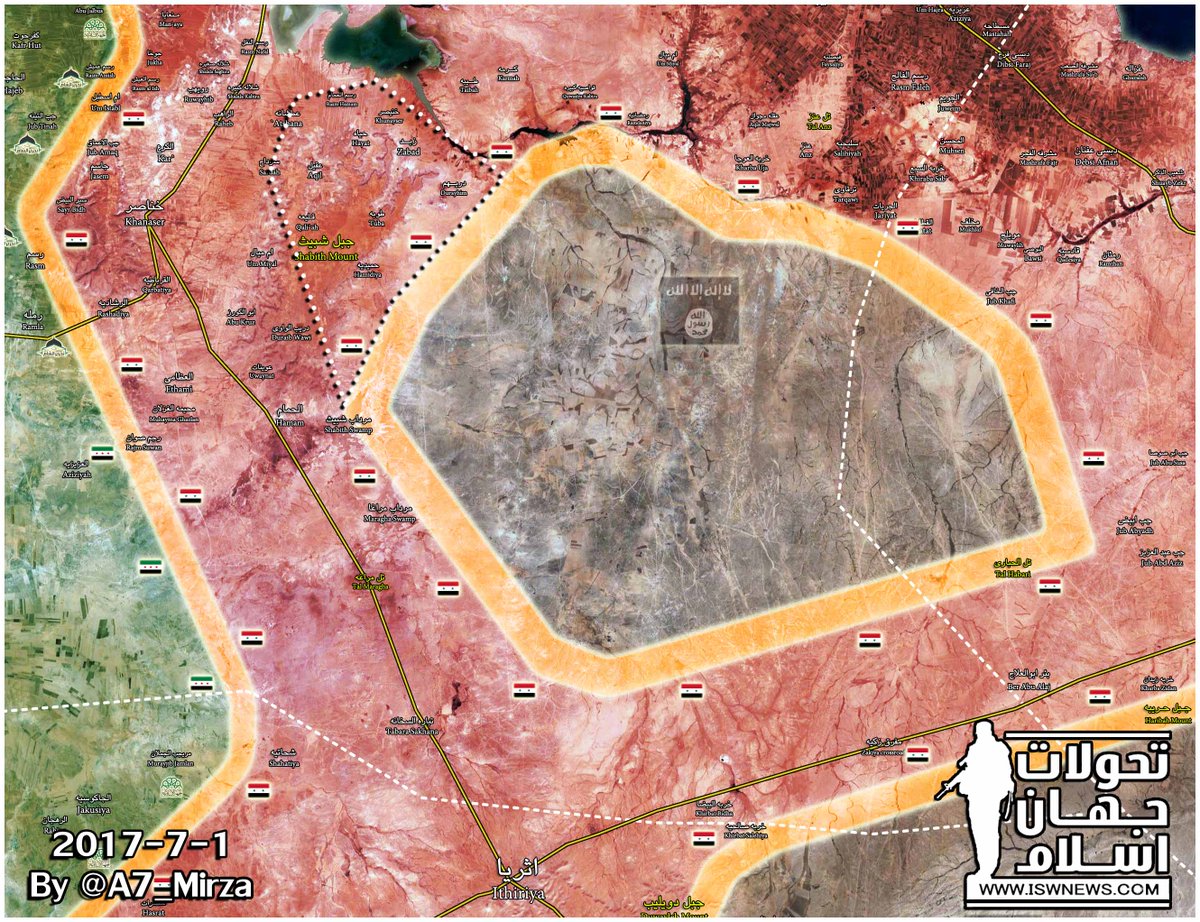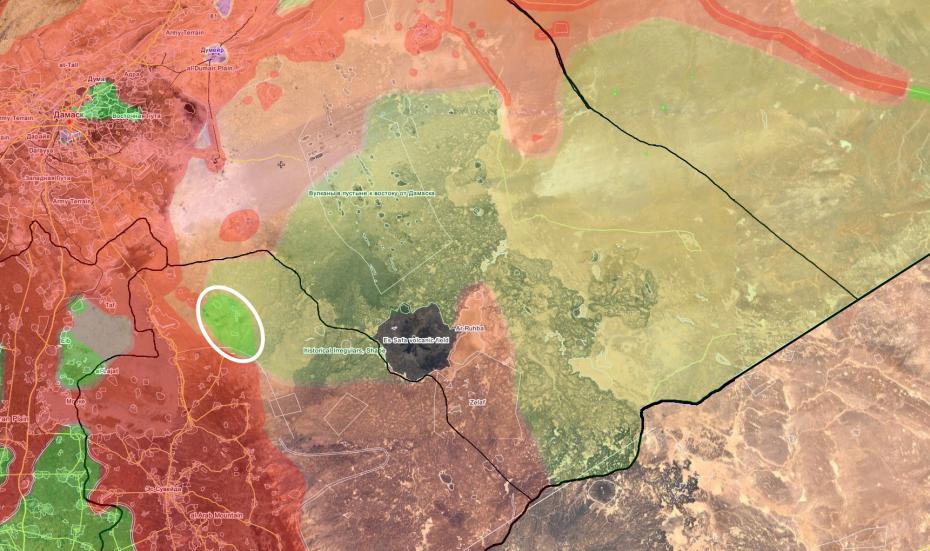The difficulty for that plan is that Assad's Alawites along with the other Shi'ites are only a relatively small fraction of Syria's population. Christians are another chunk, and they tend to support Assad too. So Assad rules with a coalition of religious minorities. But Syria is a mostly Sunni nation and most of the Sunnis seem to have turned on Assad. So he can only survive by maintaining his tyranny, and that is always going to be unstable.
The Assad regime is secular, and in no way anti-Sunni. In particular, Assad's wife is Sunni. The Sunni jihadists have, of course, tried hard to present Assad as anti-Sunni, but this strategy has failed. Of course, the jihadists, of all sorts, are Sunni, but this does not make all Sunni jihadist supporters.
What's more, the parts of Iraq that border Syria are all Sunni populated. The Iraqi Sunnis are famously unwilling to submit to Shi'ite rule. That's a big part of why Iraq fell apart after 2003. The Shi'ite dominated government in Baghdad can be expected to become an Iranian ally, but extending that into Syria might be more difficult if the Iraqi Sunnis aren't on board. And there are the Iraqi Kurds (Sunnis) to factor in too.
Who populates the whole Southern part of the Iraq-Syria border does not matter at all, because it is desert, and the belief of the de facto non-existing population does not really matter. Of course, for the Iraq to become a stable country, they have to find a way to make peace with the Sunni population. But even if there will be no improvement, to hold the control of the desert in the South-West of Iraq up to the Syrian border by military means would not that problematic.
Russia want to side with what might be the eventual winner (Iran). But more than that, Russia is hugely nostalgic for the days when it was a world superpower. In those days, it was the major player in the Middle East. Today, Syria is all that remains of those Russian client-states. So Russia has to exert itself in Syria if it wants to remain a player in the region.
This nostalgic mem is anti-Russian propaganda. There are, surely, some parts of the population where such a nostalgia has played some role in Yeltsin time. But these parts are already quite satisfied with the actual situation. Jihadi terrorism is a big issue for Russia, given the large Muslim population in Russia itself and even more in the other former Soviet republics, where Russia is interested in stability.
In the domain of politics, Russia follows more czarist traditions than Soviet ones. It has no ideology to distribute in vassal states, thus, has no need for such vassal states. The colonial regime created by the czarist regime, which continued during the Soviet time, has been given up, and there is no interest to revive it (except in anti-Russian propaganda tales). The foreign policy of the czar have been quite peaceful, with a good reason: If the empire is as big as the czarist one, you cannot handle wars on many fronts, so, you have to be sure that there will be no big alliances against Russia attacking together at the same time. If you are peaceful yourself, the wars will not be against big alliances, but against single attacking states. And to fight a single state, Russia is able to manage. So, Russia does not start wars, it finishes them.
The US is the sworn enemy of ISIS.
Not really. The sworn enemy in Syria is Assad. ISIS gives, once it is named a terrorist organization, the US a justification to enter Syria and to support other quite similar gangs with weapons if they claim, officially, to fight ISIS.
And my guess is that the US is trying to side with Turkey and Saudi Arabia in opposing growing Iranian influence. Since Assad is turning into an Iranian client, that means opposing Assad. The whole thing is hugely complicated by the pervasive neo-Puritan moralism that dominates contemporary American (and European) elites. Every action has to be presented to the public as an expression of superior morality, as part of a grand historical battle of good vs evil. (The contemporary Western academic and media elites wouldn't know 'real-politik' if it kicked them in the butt.) So all the moves that are really being made out of national-interest have to be wrapped up in often phony moral excuses.
They are the green guys on this map. While they might arguably represent the wishes of the majority of the Syrian population, they are pretty much a lost cause militarily speaking.
That argumentation would be problematic. In 2011 this would have had some plausibility. But not now. Without the support of the majority of the population Assad would not have had any chance to survive, given that the West, Turkey and SA have heavily supported the "green guys". Of course, some point is that, whatever they thought about Assad, all the non-Sunni population had to fight for him simply for survival. But if the Sunni would have been really united behind these "rebels", that would not have been enough. Say, Aleppo is Sunni, but has always been and remained a stronghold for Assad.
The US has discovered that the only battle-capable and decently organized rebels that they can count on are the SDF.
Al Qaida is also battle-capable, arguably even much better than the Kurds, and better organized. The problem with Al Qaida was that it was too problematic to support them openly. So, most of the time, they were the main US force, but only inofficially, with support being organized via lots of small gangs named "moderate rebels" which were 50% simply criminal gangs and 50% Al Qaida pretending to be "moderate" to get weapons. It was Russia which has, essentially, destroyed this game.
1. Assad taking the area. Except that most of the recent spread of red in the Syrian desert consists of pushing small military columns down undefended desert roads and then suddenly recoloring large areas red. It's less clear that Assad's forces are ready to fight for the more heavily populated river valleys. That will take time.
It will take some time even going through the desert. But that Assad forces can go, and even sufficiently fast, through more heavily populated Sunni areas they have shown in the Deir Hafer and Maskana plains. And don't forget that the most important weak point of the Syrian army is Deir Ezzor. If they succeed to connect with Deir Ezzor, this will become a stronghold and a starting point for finishing Daesh all around. And to connect with Deir Ezzor one can do via the desert. Essentially, they have now three directions to go to Deir Ezzor through the desert.
BTW, AFP
https://twitter.com/AFP/status/880758441937178625 claims that Daesh has fully withdrawn from the South Aleppo region, but it is not clear how reliable this information is. I have seen now already several maps of the Aleppo region which paint a similar picture, namely quite a lot of the desert region already painted red, but also a whole region East of Khanasser yet painted black:
Given that many maps give the same picture, there should be some reliable source behind this, but I have not yet seen this source. Whatever, some source claims that a lot of villages in the desert have already been taken by the Syrian army, but some others not yet. Maybe this is simply because they need time to clean the area. Maybe some Daesh forces remain there. Not clear.
















